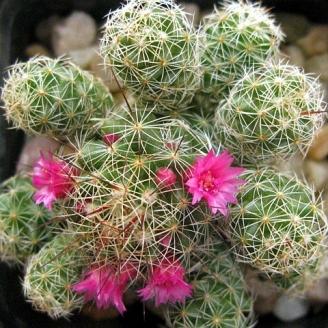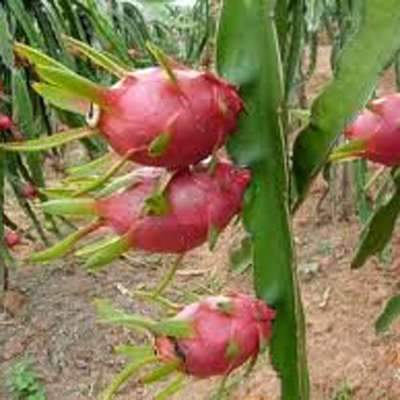IF YOU NEED an easy care and forgiving houseplant, the ever popular Desert Cactus could be the plant for you. Cacti come in many different shapes and sizes but in general can be separated into the Desert Cacti and the Forest Cacti.
The desert cacti make perfect low maintenance home plants because you can mistreat neglect them but they will take more punishment before succumbing when compared to other houseplants. On the other hand, if you are very attentive you will have a fine specimen growing happily and potentially showing off some wonderful flowers.
The most common types of home cactus are:
Mammillari

The Mammillari is one of the largest in the cactus family (Cactaceae). Most of the mammillarias are native to Mexico, but some come from the southwest USA, the Caribbean, Colombia, Venezuela, Guatemala and Honduras. The first was described by Carolus Linnaeus as Cactus mammillaris in 1753, deriving name from Latin mammilla, "nipple", referring to the tubercles that are one of the plant's specific features.
Mammillarias have extremely variable spination from species to species, and attractive flowers, making them specifically attractive for cactus hobbyists. Most mammillarias plants are considered easy to cultivate, though some species are among the hardest cacti to grow. Cactus fanciers can assist conservation of these rare plants by choosing nursery-bred specimens (wild-collected ones are illegal to possess for the rarest species anyways). Besides helping to preserve rare plants, one can gain experience in growing and breeding cacti in general with nursery-bred rare mammillarias: several mammillarias are quite easy (for cacti) to grow from seeds.
Zygocactus the Red Christmas Cactus Plant

The Christmas cactus is native to the South American jungles. The flowers bloom once a year and come in shades of fuchsia, yellow, salmon, pink, white, orange, red and sometimes will even have a combination of the colors. The Christmas cacti are tropical plants and require sunlight and the blooms last longer with cooler temperatures.
Dragon Fruit Juicy Sweet Fragrant Flower

Dragon Fruit is an amazing orchid cactus, related to the epiphyllum. It blooms at night with fragrant flowers lasting only until morning. Hand pollinate when the flowers are open to produce fruit. The fruit is low in calories and offers numerous nutrients, including Vitamin C, phosphorus, calcium, plus fiber and antioxidants. May take two to three years to reach maturity.
Care Instructions
Light
In the majority of cases, a cactus will be very happy to sit in a location that receives direct sunlight for part or most of the day.
This is often essential if you want your plant to get bigger and to flower, for the those that do flower indoors of course as not all do. That said, almost all cacti will be somewhat accepting of a shadier spot for a time, but growth will suffer as a result.
Watering
The greatest cactus myth is arguably that "they don't need much water". On one hand this is perfectly true, there is no other type of plant that is so well adapted to deal with long periods of drought. If you forget to water once the soil has dried out it will most probably survive for several weeks or even months without any ill effects. The best way to water your cactus is to do so whenever the soil dries out fully from your last watering. When this happens water well again and then don't give any more until the soil has dried out once more.
Humidity
Remember that deserts tend to be very arid with very low levels of humidity. So you need to be careful about providing too much humidity because cacti have an increased chance of rotting in very humid locations if combined with poor ventilation. So bathrooms and steamy kitchens might not be suitable unless the ventilation is good.
Feeding
When it comes to feeding, a standard cactus or all purpose fertilizer during the Spring and Summer months will be suitable. These plants don't grow particular fast so you don't need to apply fertiliser to your cactus more than a few times each year.
Temperature
Broadly speaking there is not an upper range of temperature you will find in your home or office that is too hot for your cactus. 5°C / 41°F is the lowest safe temperature, as you get lower the risk of serious damage increases. If the soil is barely moist or actually completely dry you could get closer to 0°C / 32°F or a little below in some instances, although some damage might result.
Check out our range of high quality, exclusively home grown cactus variety by 9Greenbox.


